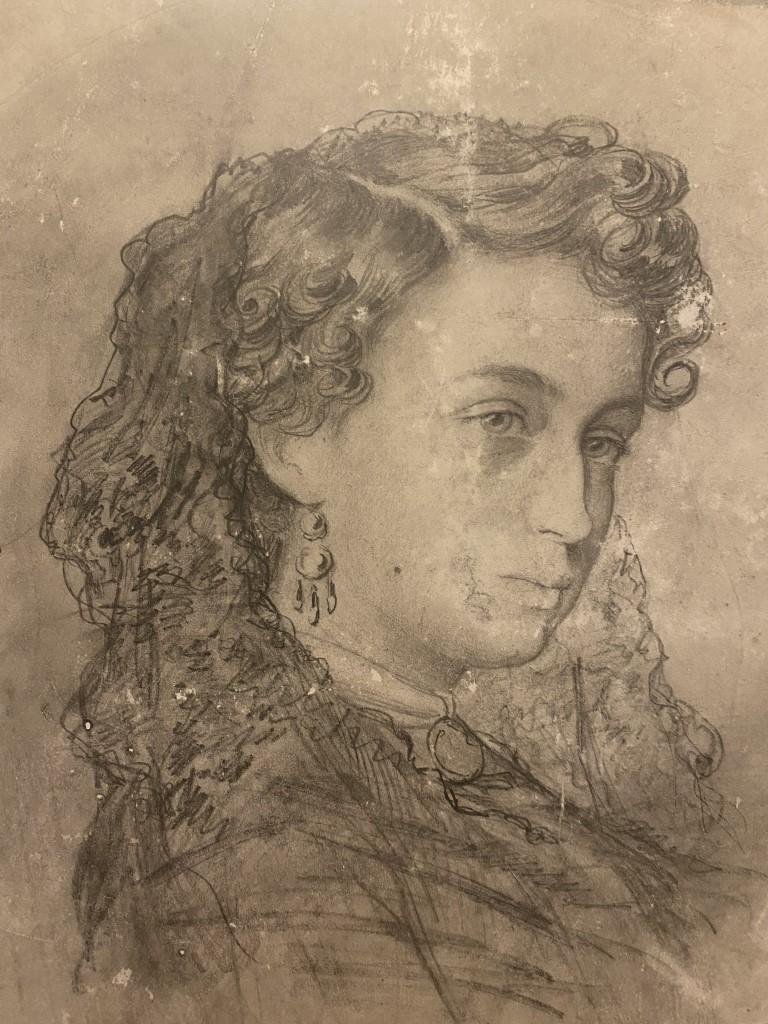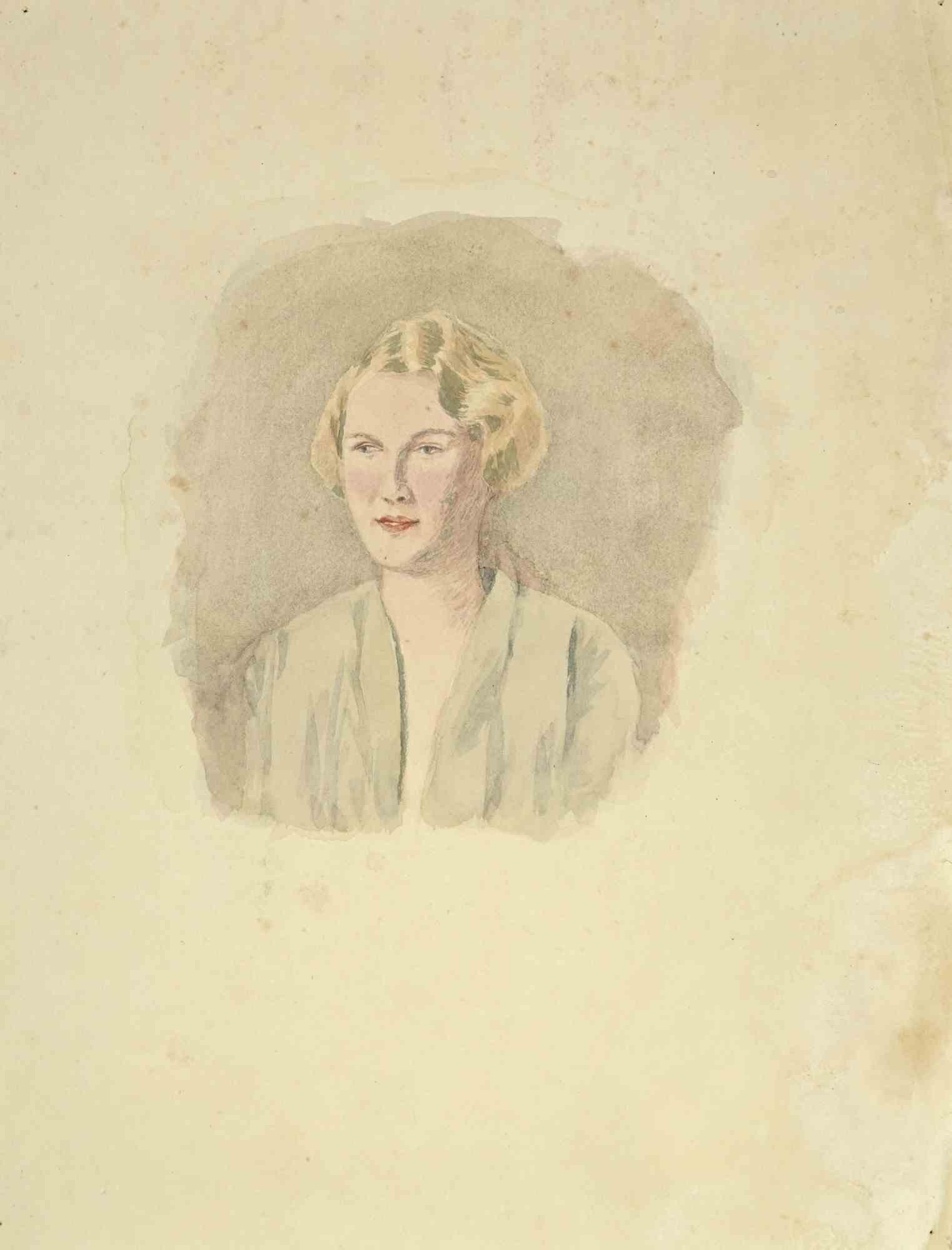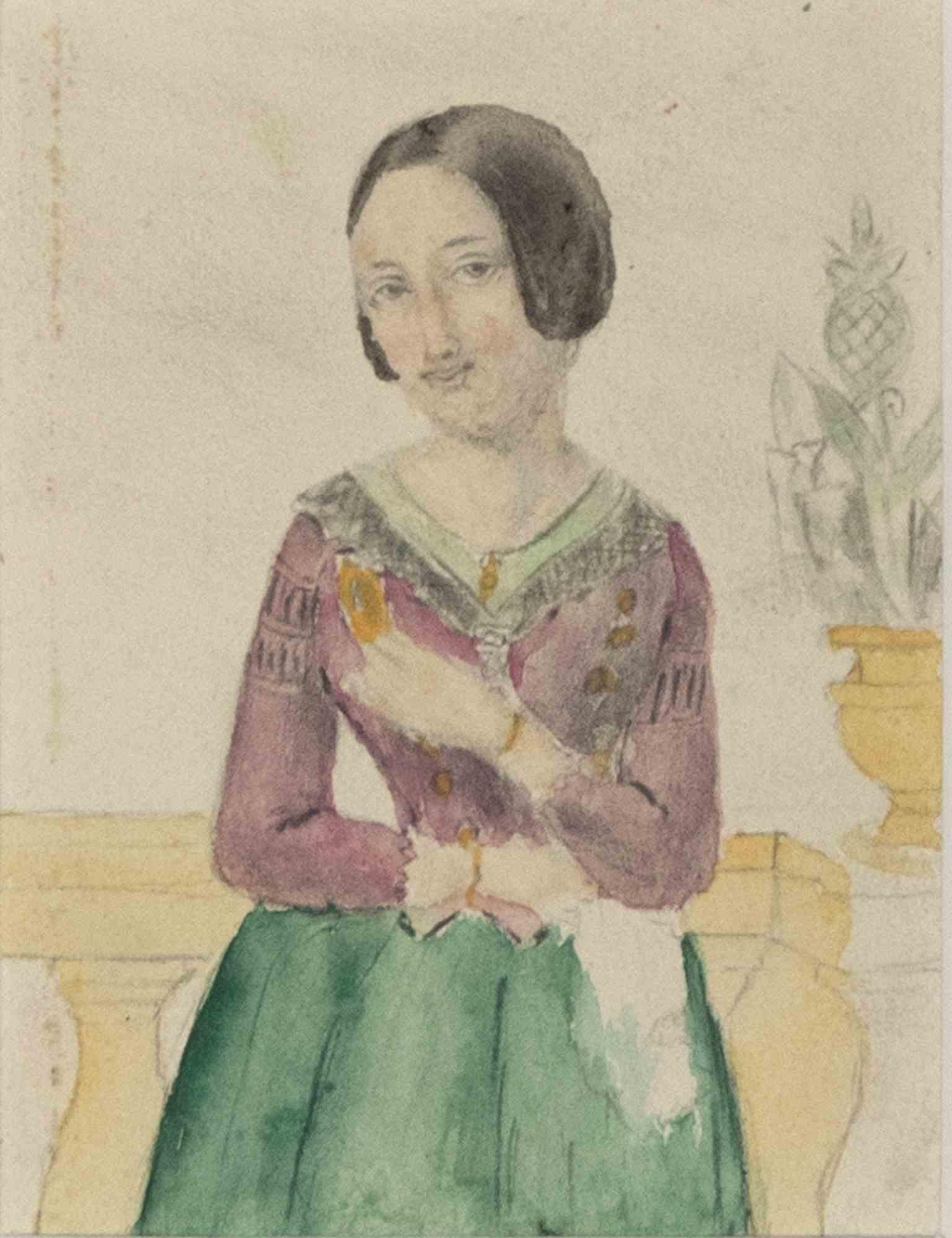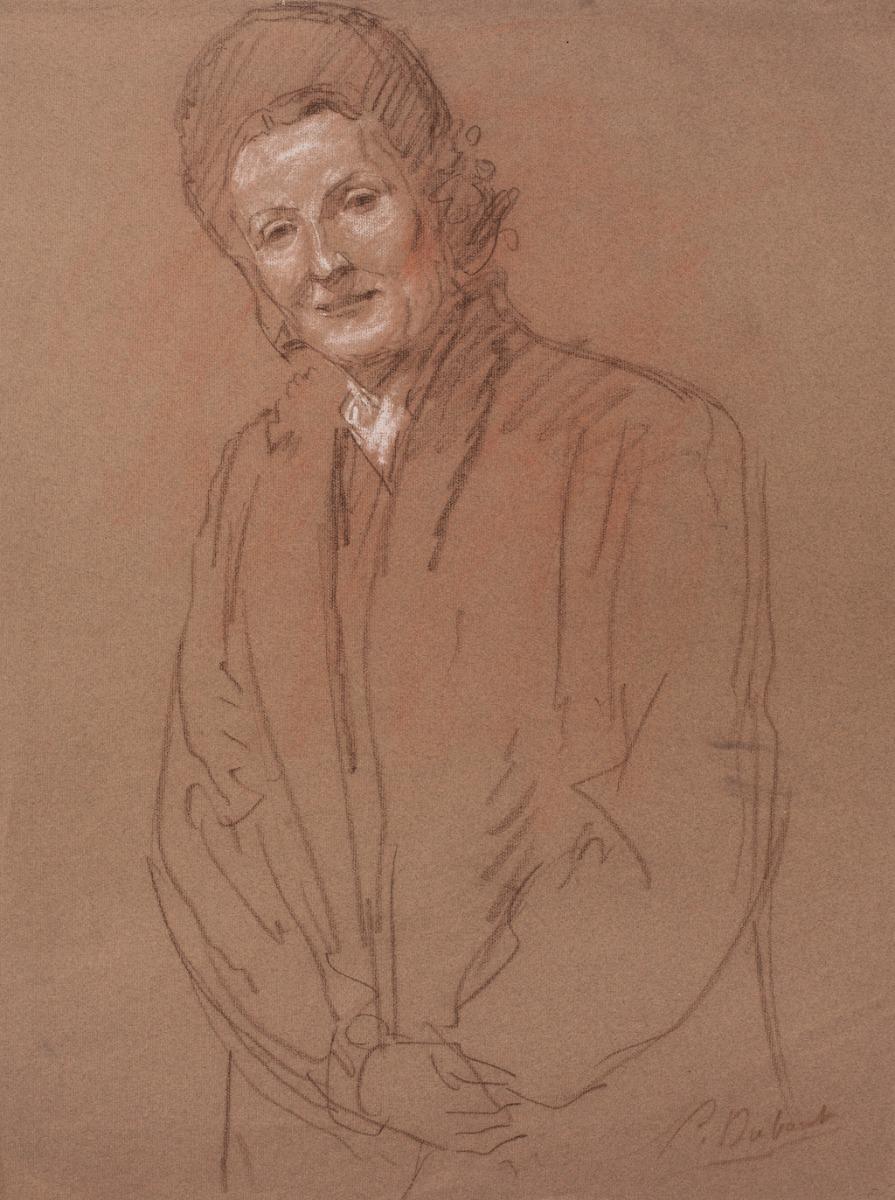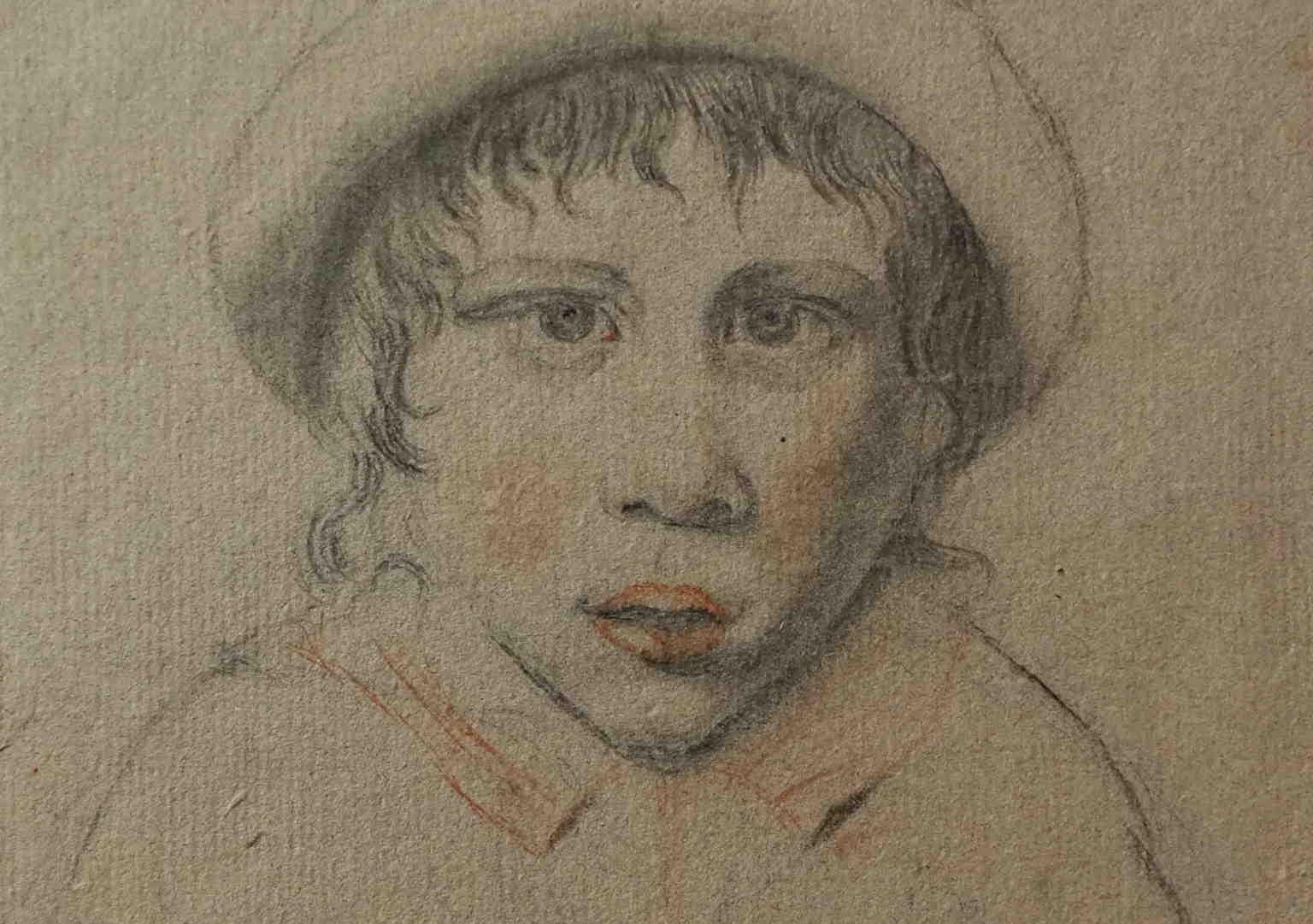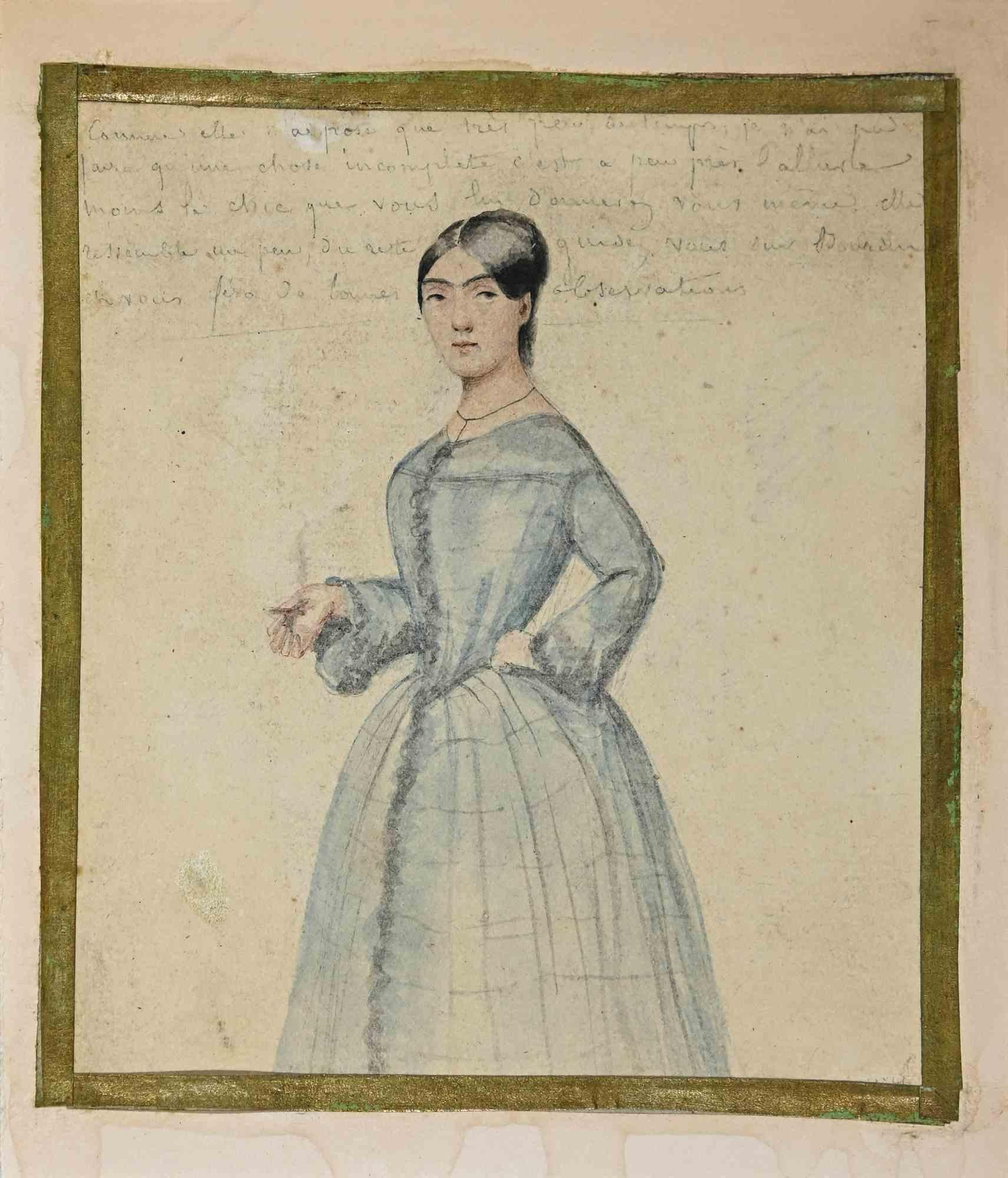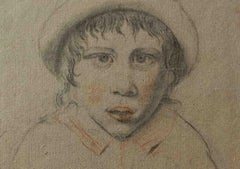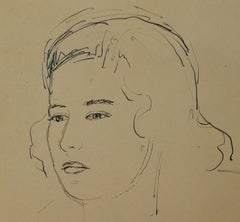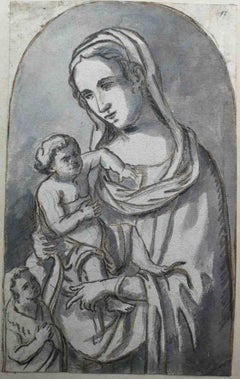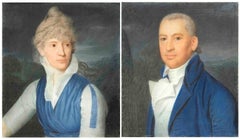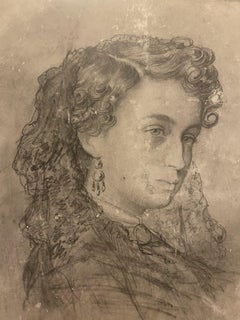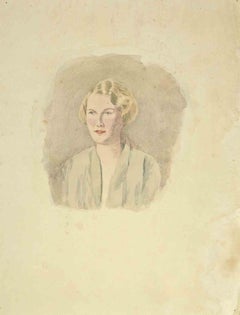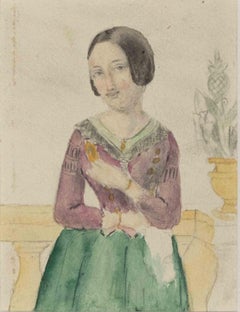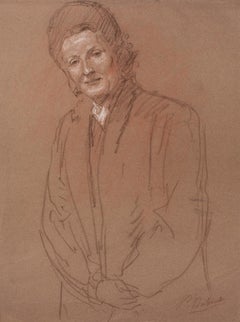Items Similar to Disegno italiano, ritratto di signora con cuffia, matita su carta del XIX secolo
Want more images or videos?
Request additional images or videos from the seller
1 of 7
UnknownDisegno italiano, ritratto di signora con cuffia, matita su carta del XIX secoloXIX secolo
XIX secolo
$2,380.96
£1,769.70
€2,000
CA$3,287.46
A$3,645.55
CHF 1,915.46
MX$44,542.37
NOK 23,965.06
SEK 22,495.31
DKK 15,229
About the Item
Il disegno in questione è molto probabilmente uno studio dal vivo per un ritratto da riportare successivamente in pittura, come si può notare dall'intensità dello sguardo e dall'alta definizione dei dettagli del volto. Il resto del corpo, invece, è appena delineato da un semplice tratto a matita, creando un interessante contrasto nei livelli di finitezza.
L'effigiata è una donna matura che indossa una cuffia legata con un fiocco sotto il collo, da notare l'alta esecuzione delle pieghe della trina che adornano il contorno del viso. La cuffia e quello che si può ricavare dello stile del vestito ci aiutano a datarlo ai primi decenni del XIX secolo e ad attribuirlo alla cultura romantica settentrionale, più nello specifico si può supporre una provenienza dall'area lombarda.
- Creation Year:XIX secolo
- Dimensions:Height: 10.83 in (27.5 cm)Width: 8.86 in (22.5 cm)
- Medium:
- Movement & Style:
- Period:
- Condition:
- Gallery Location:Florence, IT
- Reference Number:1stDibs: LU1240213910712
About the Seller
5.0
Vetted Professional Seller
Every seller passes strict standards for authenticity and reliability
Established in 1958
1stDibs seller since 2019
30 sales on 1stDibs
- ShippingRetrieving quote...Shipping from: Florence, Italy
- Return Policy
Authenticity Guarantee
In the unlikely event there’s an issue with an item’s authenticity, contact us within 1 year for a full refund. DetailsMoney-Back Guarantee
If your item is not as described, is damaged in transit, or does not arrive, contact us within 7 days for a full refund. Details24-Hour Cancellation
You have a 24-hour grace period in which to reconsider your purchase, with no questions asked.Vetted Professional Sellers
Our world-class sellers must adhere to strict standards for service and quality, maintaining the integrity of our listings.Price-Match Guarantee
If you find that a seller listed the same item for a lower price elsewhere, we’ll match it.Trusted Global Delivery
Our best-in-class carrier network provides specialized shipping options worldwide, including custom delivery.More From This Seller
View AllDisegno matite su carta ritratto di fanciullo con cappellino del XVIII secolo
Located in Florence, IT
Il disegno a matita grigia e rossa raffigura un intenso ritratto frontale di un fanciullo con cappello, con le braccia incrociate davanti.
Sul retro, in grafia corsiva, è probabilme...
Category
1780s Other Art Style Portrait Drawings and Watercolors
Materials
Paper, Color Pencil
Disegno figurativo italiano ritratto femminile della metà del XX secolo
By Giovanni Colacicchi
Located in Florence, IT
Soggetto del disegno a penna è un ritratto femminile, con aria seria che contrasta con la pettinatura elegante e vaporosa, tipica degli anni '50, periodo a cui può essere datato.
Rie...
Category
1950s Other Art Style Portrait Drawings and Watercolors
Materials
Paper, Pen, Pencil
19th century Italian religious figurative drawing on paper
Located in Florence, IT
This drawing, bistro on paper, depicts a typical Renaissance-style Majesty, thus the Virgin enthroned with Jesus on her lap. The echoes are clearly referable to the school of Filippo...
Category
Late 19th Century Renaissance Figurative Drawings and Watercolors
Materials
Paper, Ink
Due ritratti figurativi aristocratici pastelli su pergamena primi del XIX secolo
Located in Florence, IT
Sul cartoncino applicato nella cornice è riportata l'annotazione, a penna e in grafia Kurrent, "Urgroßvater Ludwig Fr(ei)h(e)r(r) von Keller" "Urgroßmutter ...
Category
Late 18th Century Other Art Style Portrait Drawings and Watercolors
Materials
Parchment Paper, Pastel, Cardboard
Ritratto a matita del pittore Francesco Albani, inizi del XIX secolo
Located in Florence, IT
Il disegno rappresenta, come riportato a penna in basso al centro del foglio, il ritratto del celebre pittore dell'Emilia Romagna Francesco Albani, uno dei massimi rappresentanti del...
Category
Early 18th Century Other Art Style Portrait Drawings and Watercolors
Materials
Paper, Pencil
Coppia di disegni "accademie" figurativi neoclassici dall'antico del XIX secolo
Located in Florence, IT
Coppia di disegni che rientra pienamente nella tipologia degli studi detti "Accademia", che quindi erano la base della formazione degli allievi che frequentavano le Accademie di Bell...
Category
Early 19th Century Other Art Style Portrait Drawings and Watercolors
Materials
Pencil, Paper
You May Also Like
Portrait - Original Pencil on Paper - 19th Century
Located in Roma, IT
"Portrait" is an original pencil drawing on ivory paper by Anonymous Artist of the 19th Century.
Very good condition.
Not signed.
Category
19th Century Modern Figurative Drawings and Watercolors
Materials
Pencil
The Portrait - Drawing - Mid 20th century
Located in Roma, IT
The Portrait is a drawing realized by an anonymous in the mid-20th century.
Pencil and watercolor drawing on paper.
Good conditions with foxing.
Category
Mid-20th Century Modern Figurative Drawings and Watercolors
Materials
Pencil, Watercolor
Portrait - Original Drawing - Early 20th Century
Located in Roma, IT
Portrait is an original Drawing in pencil and watercolor realized by an anonymous artist in the mid-20th Century.
Good Conditions.
The artwork is depicted through soft strokes in a...
Category
Mid-20th Century Modern Figurative Drawings and Watercolors
Materials
Pencil
Portrait - Original Pencil Drawing - Early 20th Century
Located in Roma, IT
Portrait is an original drawing artwork realized by an unknown artist of the early 20th Century in pencil and white chalk.
Hand-signed on the lower right (illegible)
The state of ...
Category
Early 20th Century Modern Figurative Drawings and Watercolors
Materials
Pencil
Portrait of Lady - Original Drawing - 19th Century
Located in Roma, IT
Portrait of Lady is an original China Ink and watercolor Drawing realized by a european artist of the late-19th century.
Good condition on a little cream colored cardboard.
No sign...
Category
Mid-20th Century Modern Portrait Drawings and Watercolors
Materials
Ink, Watercolor
Woman - Drawing - Late-19th Century
Located in Roma, IT
Woman is a drawing realized in the Late-19th Century.
Red pencil on ivory-colored paper.
Good conditions with slight foxing.
The artwork is realized through deft expressive strokes.
Category
Late 19th Century Modern Figurative Drawings and Watercolors
Materials
Color Pencil
More Ways To Browse
Di Donna
8x8 Frame
Be Dior
24x24 Painting
Pink Paintings
Antique Prints And Engravings
Modern Paintings French Artists
French Impressionist Art
Chicago Artists
Framed Sculpture
San Francisco Artists
Paintings Of Japan
Red Abstract Paintings
Mexican Artists
Mexico Artist
American Landscape Oil Paintings
Paintings Of Spain
Geometric Shapes Art
